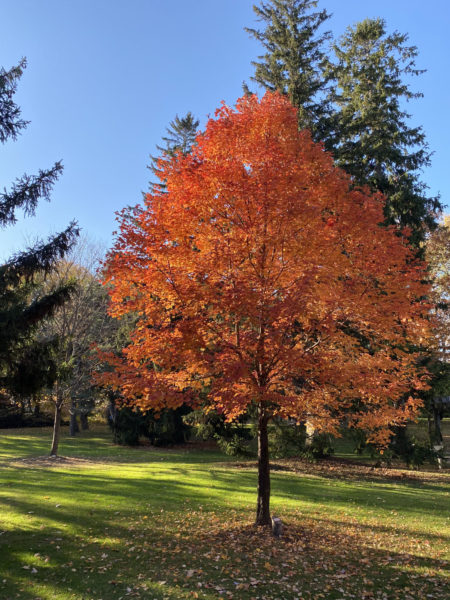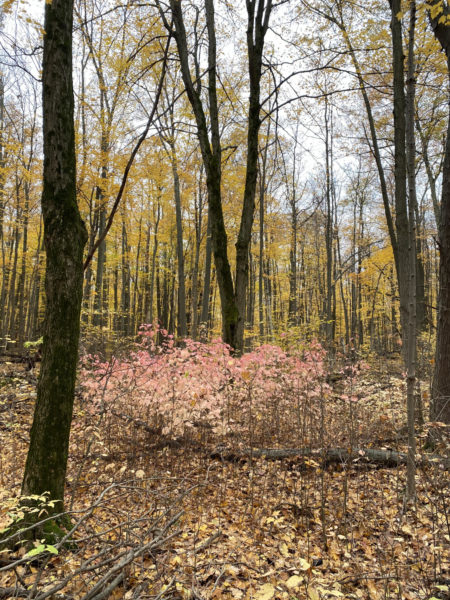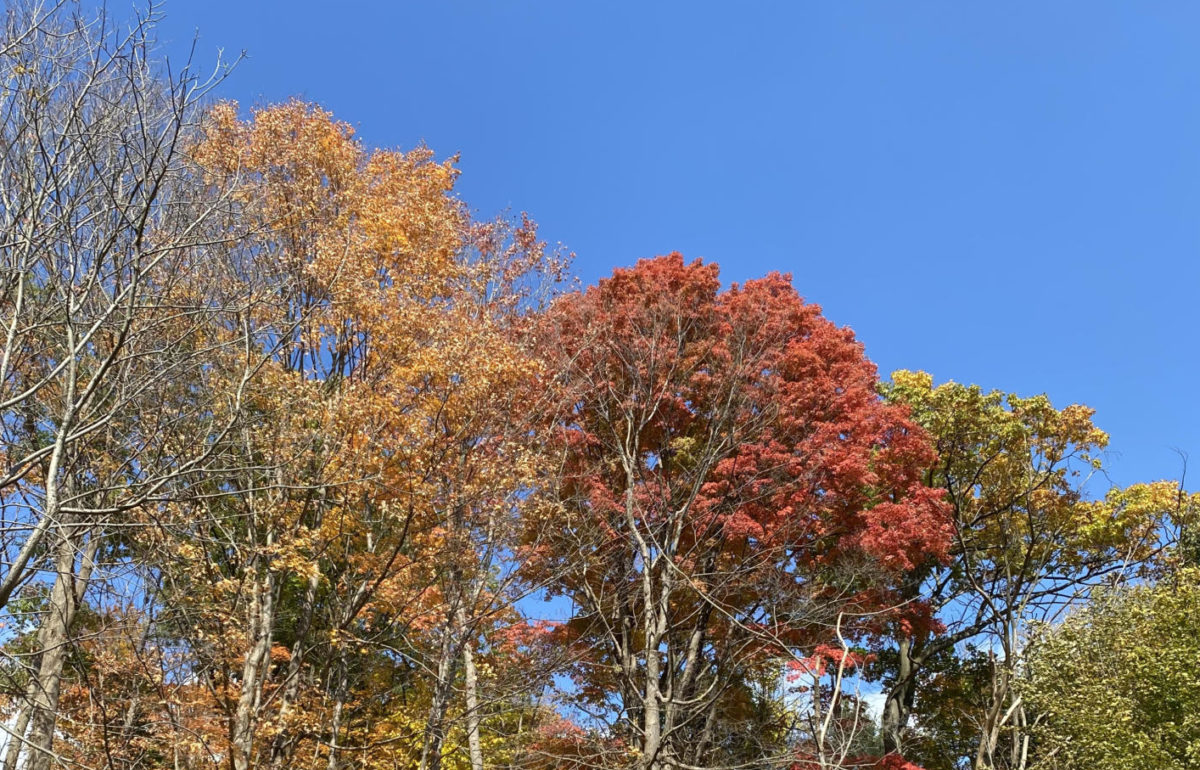
The colourful array of changing leaves is the visual most commonly associated with autumn. But, what exactly evokes the change in colour?
As many years of science class have illustrated, plants use sunlight to get energy through a process called photosynthesis. The pigment chlorophyll is a key component of this process. Chlorophyll is also what gives tree leaves – and most plants – their green colour.
As winter approaches, the daylight hours decrease. In an effort to conserve energy, the production of chlorophyll slows down this time of year, eventually stopping. When there is no more chlorophyll left, the colours of the other pigments in the leaf become visible.
These pigments are called carotenoids (responsible for the yellows, oranges and browns we see) and anthocyanin (responsible for the reds and purples). Carotenoids are present in the leaf throughout the year but anthocyanin is produced near the end of the growing season and into autumn.
The lessened light also triggers the leaves to close off their veins from the main body of the tree. Once a leaf is completely separated from the tissues of the tree, it is ready to fall. This process also occurs to protect the tree from unnecessary damage during the harsh winter weather.

The fallen leaves on the ground help to fertilize the soil as they decompose, providing trees with important nutrients. Many species also rely on fallen leaves to provide shelter. Butterflies and other insects use the fallen leaves as a canopy and insulator during the winter.
As October unfolds, look out for the beautiful autumn scenery – now with a little more insight!








